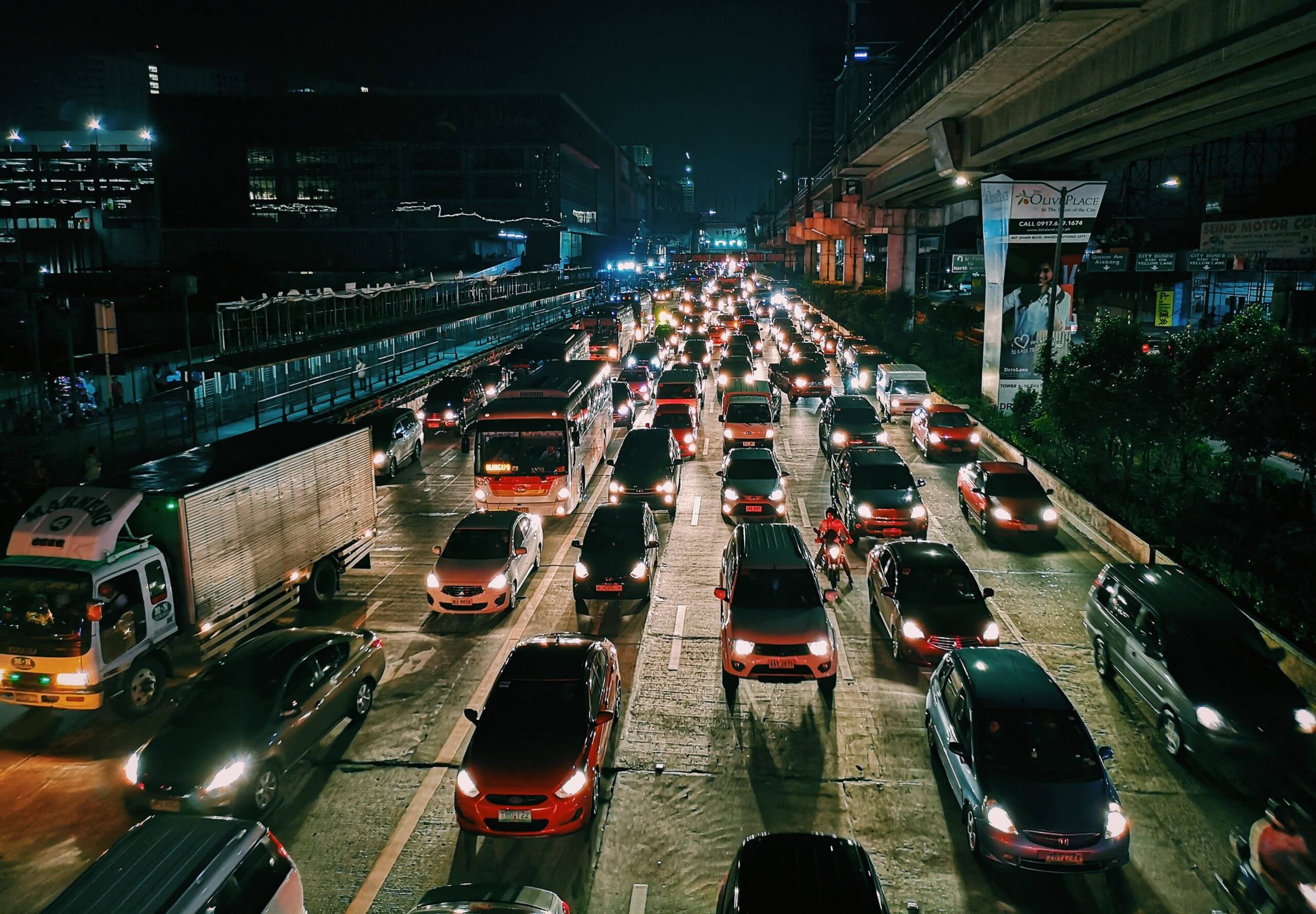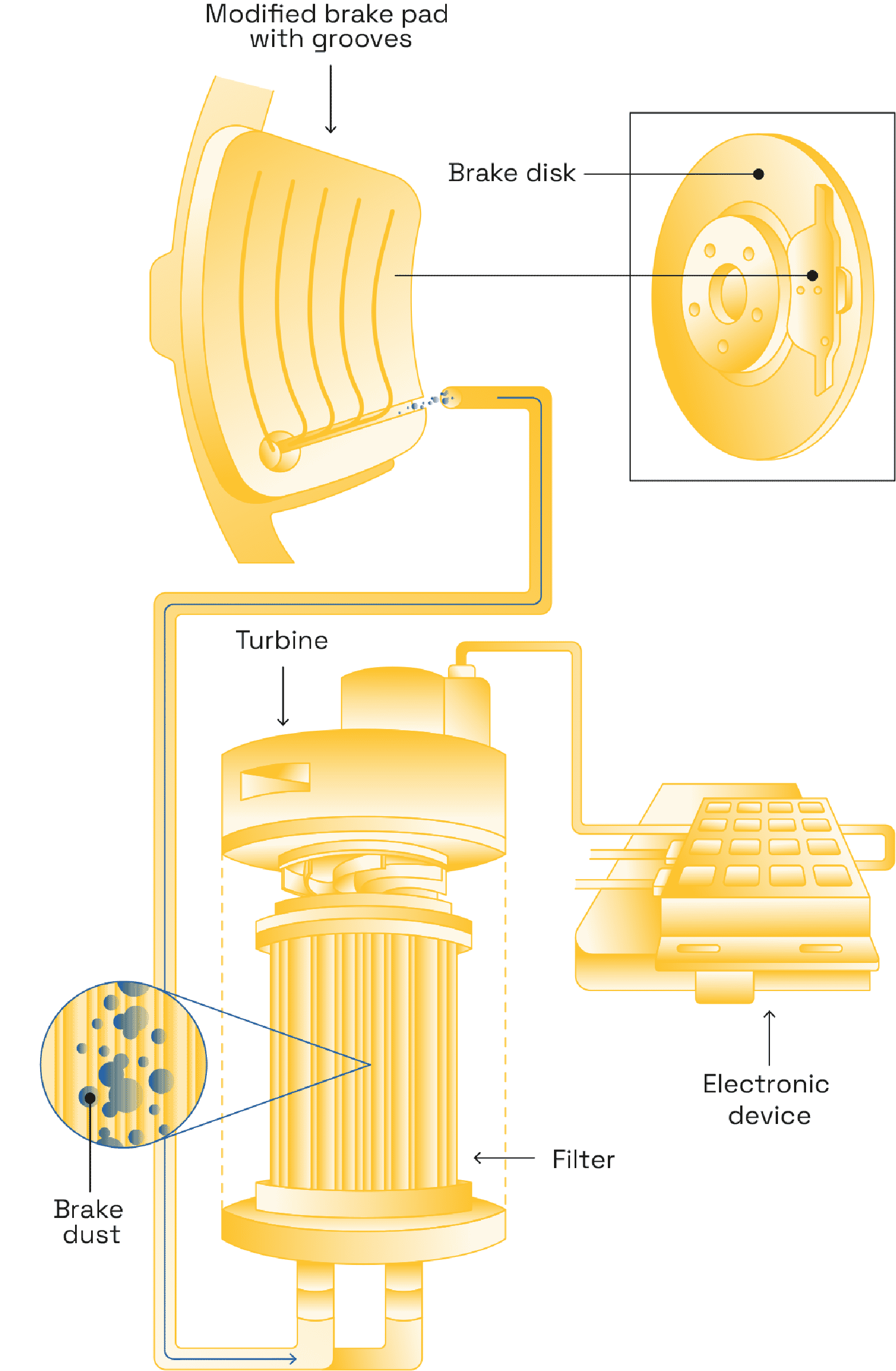FAQ


What type of pollution is caused by road traffic?
Air pollution exposure causes 40,000 deaths each year in France. How? Road transport comes top on the list of pollutant sources, neck and neck with the residential sector (home heating especially). Pollution is generated by vehicle traffic during chemical and physical reactions:


- Carbon monoxide (CO) is a poisonous gas that escapes when fossil fuel is burned at temperatures that are not quite high enough for full combustion. Oxygen and carbon molecules then join together to form carbon monoxide. When a vehicle starts its engine, it releases a lot of this pollutant into the atmosphere, but the amount varies depending on the vehicle and traffic conditions.
- Another source of pollution associated with traffic is nitrogen oxides (NOX): nitric oxide (NO) and nitrogen dioxide (NO2). Released during the fossil fuel combustion process, these two gases come into contact with water vapour and generate acids that interact with gases and volatile particles to form nitrates and other compounds that are harmful to respiratory health and the environment. They also contribute to acid rain.
- Fine particles (FP) include those in exhaust fumes that are generated by fuel combustion, and fine friction particles that are a result of tyre and brake wear and tear. Fine particles are complex composites. And unlike the fine particles in exhaust fumes, they do not change their composition on contact with other pollutants in the atmosphere. They are toxic due to their composition, shape and size: the finer the particle, the further it can penetrate inside the body. Unlike other sources of pollution associated with vehicle traffic (CO, NOX, HC, O3, FP from exhaust fumes), fine friction particles are here to stay, even as electric vehicles become more popular. Often underestimated by public policies and regulations, they are a major health risk, causing oxidative stress,* respiratory or cardiovascular disorders, cancers, neurodegenerative diseases (Parkinson, Alzheimer), etc.
- Unburned hydrocarbons (HC) are another source of pollution caused by traffic. They are generated when fuel combustion is incomplete. This mostly happens in poorly maintained engines and when vehicles are filled with low-quality fuels. Unburned hydrocarbons are released in exhaust gases. Made up of carbon (C) and hydrogen (H), the unburned hydrocarbons ejected into the air contribute to the formation of ozone. They are harmful to health and cause anxiety, cardiovascular disease, heart attacks, brain degeneration and an increased risk of cancer.
- Ozone (O3) is a so-called “secondary” pollutant which is not emitted directly by petrol or diesel vehicles but created during the chemical reaction between nitrogen oxides and volatile organic compounds under the effect of heat and sunlight. Its impacts on human health and the environment are serious: asthma, breathing difficulties and an increased risk of stroke.
* Oxidative stress occurs when a cell can no longer manage the excessive presence of toxic molecules, mainly from cellular respiration, free radicals. They can damage cells and DNA.
Discover more questions
When they are inhaled, microscopic fine particles are toxic in how they can affect the lungs, heart, and cells. They can cause inflammation and exacerbate the risks of respiratory, pulmonary, cardiovascular diseases and even various types of cancer. To combat these emissions and the diseases they cause, there is a need for far-reaching public policies. Some measures are easy to implement, such as limiting the use of cars, capturing brake particles, avoiding congested areas, finding out about air quality indicators and taking care to protect your respiratory and pulmonary health.
The term “fine particle” refers to an aggregate of polluting chemical compounds created during combustion, friction or chemical reactions. Forest fires, volcanic eruptions, and desert dust: fine particles can occur naturally. But most fine particles are generated by human activity. How? Mainly from road traffic (exhaust gases and abrasion caused by brakes on tyres and the road), home heating, and industrial and agricultural emissions.
Electric vehicles help fight against global warming and reduce the air pollution that causes 307,000 premature deaths in Europe every year. But electric vehicles are not a miracle solution. They require a lot of energy to produce, charging them may need large amounts of fossil fuels (depending on the source of the electricity used) and – like petrol or diesel cars – they emit fine friction particles.






